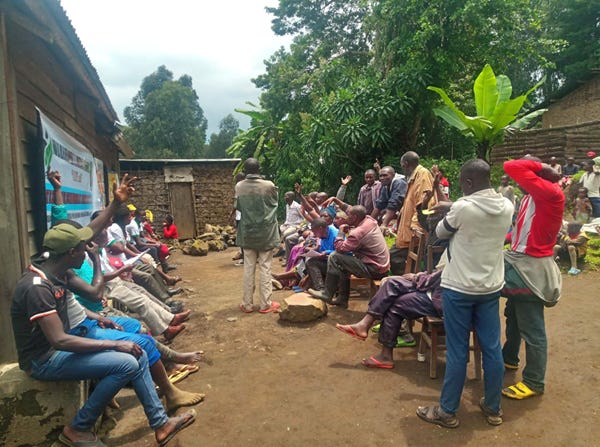For decades, economic development in less developed countries (LDCs) has been primarily measured by Gross Domestic Product (GDP) growth. While economic prosperity is undeniably important, an overreliance on GDP targets can overlook critical aspects of well-being and sustainability. This article explores alternative development strategies that go beyond a singular focus on GDP. Less developed countries have long grappled with finding effective strategies to spur economic growth, reduce poverty, and achieve sustainable development. While traditional approaches like import substitution industrialisation and export-led growth have yielded mixed results, alternative strategies have emerged in recent decades.
The Limitations of GDP targets
GDP, a measure of the total market value of all final goods and services produced in a country, has limitations as a sole indicator of development:
Inequality: High GDP can mask significant wealth disparity within a nation, with benefits not reaching the most vulnerable populations [1].
Environmental Impact: Economic growth often comes at the expense of environmental degradation, jeopardizing long-term sustainability [2].
Social Development: GDP fails to capture progress in crucial areas like education, healthcare, and social justice [3].
However, some structural transformation and economic diversification is required to produce economic growth and wealth. Diversifying the economic base and promoting structural transformation away from low-productivity sectors like agriculture towards higher-productivity sectors like manufacturing and modern services is seen as crucial for sustained growth and development. This can involve targeted industrial policies, developing special economic zones, and fostering entrepreneurship and innovation.
Regional Integration and Cooperation
Regional integration and cooperation among developing countries can create larger markets, facilitate trade and investment flows, and enable economies of scale. Regional initiatives like the African Continental Free Trade Area aim to boost intra-regional trade, promote regional value chains, and enhance economic integration.
Redefining Development: A Multifaceted Approach
Alternative development strategies propose a more holistic approach, focusing on a range of factors that contribute to a nation's well-being:
Human Development Index (HDI): Developed by the UN, the HDI takes into account life expectancy, education levels, and standard of living, providing a more comprehensive picture of a country's progress [4].
Sustainable Development Goals (SDGs): The UN's SDGs are a set of 17 interconnected goals aimed at achieving a more sustainable and equitable future. These goals address poverty, hunger, health, education, climate change, and other critical issues [5].
Gross National Happiness (GNH): Bhutan's concept of GNH prioritises well-being and environmental sustainability alongside economic growth [6].
Strategies for Inclusive and Sustainable Development
Development in less developed countries (LDCs) poses unique challenges, including poverty, limited infrastructure, and insufficient education systems. Traditional development strategies often focus on large-scale industrialisation and Western-style economic models. However, alternative strategies tailored to the specific needs and contexts of LDCs are increasingly being explored. These strategies prioritise sustainability, inclusivity, and local empowerment. This approach emphasises broad-based participation in the growth process, equitable distribution of benefits, and environmental sustainability. Key elements include investing in human capital, promoting decent employment opportunities, strengthening social protection systems, and adopting green growth policies.
LDCs can leverage various strategies to achieve inclusive and sustainable development:
Investing in People: Allocating resources towards education, healthcare, and social safety nets empowers individuals and fosters a more productive workforce Investing in education and vocational training is crucial for long-term development. Tailoring education to meet local needs and market demands can enhance employability and drive economic growth.
Example: The Educate! program in Uganda integrates entrepreneurship training into secondary school curriculums. Students learn business skills and develop real-world projects, preparing them for the job market or to start their own businesses. This program has shown significant positive impacts on youth employment and income. [7]. Within this investment in people Promoting Gender Equality should feature. Empowering women through education and economic opportunities contributes significantly to overall development. [8] [15]
Climate-Resilient and Sustainable Development: Given the disproportionate impact of climate change on less developed countries, integrating climate adaptation and mitigation into development strategies is crucial. This includes investing in climate-resilient infrastructure, promoting sustainable agriculture and renewable energy, and building institutional capacity for disaster risk management. While no one-size-fits-all solution exists, these alternative strategies offer potential pathways for less developed countries to achieve more inclusive, sustainable, and resilient development in the face of global challenges. Investing in renewable energy and green technologies can help LDCs leapfrog over traditional fossil-fuel-based development, addressing energy poverty and fostering sustainable economic growth. Solar, wind, and bioenergy are particularly promising.
Example: In Kenya, the use of small-scale solar systems has transformed rural areas. Companies like M-KOPA Solar provide affordable solar home systems, enabling households to access electricity for lighting, phone charging, and running small appliances. This initiative has improved living standards and created new economic opportunities. [9].
Community-Driven Development: Empowering local communities to participate in decision-making and design solutions tailored to their needs fosters ownership and sustainability Empowering local communities to manage their natural resources sustainably can lead to better outcomes for both people and the environment. This approach ensures that development initiatives are locally relevant and culturally appropriate.
Example: In Nepal, community forestry programs have given local communities the rights to manage and benefit from nearby forests. These programs have led to improved forest conditions, increased biodiversity, and enhanced livelihoods for community members through sustainable harvesting practices and eco-tourism. [10].
Sustainable Agriculture and Agroecology: Sustainable agriculture and agroecology focus on environmentally friendly farming practices that enhance food security, improve soil health, and reduce reliance on chemical inputs. These practices include crop diversification, organic farming, and permaculture. Example: In Malawi, the “Soil, Food, and Healthy Communities” project promotes agroecological methods to improve crop yields and nutrition among smallholder farmers. By using composting, crop rotation, and intercropping, farmers have increased their resilience to climate change and improved their livelihoods. [11] [14]
Microfinance and Social Enterprises: Microfinance provides small loans to entrepreneurs in LDCs who lack access to traditional banking services. This approach helps foster local businesses and reduces poverty by enabling individuals to create and sustain livelihoods. Example: The Grameen Bank in Bangladesh, founded by Muhammad Yunus, has been a pioneer in microfinance. It offers small loans to poor women, enabling them to start small businesses. This model has significantly contributed to poverty reduction and women's empowerment in Bangladesh. [12]
Leveraging the Digital Economy: The digital revolution presents opportunities for leapfrogging traditional development paths. Strategies focused on building digital infrastructure, fostering digital skills, and promoting e-commerce and digital entrepreneurship can drive innovation, productivity gains, and economic diversification.
Harnessing information and communication technologies (ICT) can bridge the digital divide and promote inclusive development. Mobile technology, internet access, and digital literacy programs can provide LDCs with access to global markets, information, and services.
Example: In India, the Digital India initiative aims to enhance digital infrastructure and literacy, making government services accessible online and promoting digital entrepreneurship. This initiative has improved governance, education, and healthcare delivery, particularly in rural areas. [13]
Conclusion
Moving beyond a singular focus on GDP targets is crucial for LDCs to achieve truly sustainable and inclusive development. By embracing alternative strategies that prioritise well-being, environmental protection, and social justice, LDCs can build a brighter future for their citizens and the planet. [16]
Alternative development strategies for LDCs emphasise sustainability, local empowerment, and inclusivity. By focusing on sustainable agriculture, microfinance, renewable energy, education, community-based resource management, and digital inclusion, LDCs can achieve more resilient and equitable development. These approaches are tailored to local contexts and leverage indigenous knowledge, offering a promising path towards sustainable growth.
References:
[1] The World Bank. (2020). Poverty and Inequality. https://www.worldbank.org/en/topic/poverty/overview
[2] Dasgupta, P. (2021). Making the Green Deal work: A framework for sustainable development. Journal of Environmental Economics and Policy, 10(2), 167-185.
[3] United Nations Development Programme. (2022). Human Development Report 2022: Uncertain Times, Unsettled Lives: Shaping our Turbulent Future.
[4] United Nations Development Programme. (2023). Human Development Reports.
[5] United Nations. (2023). Sustainable Development Goals. https://sdgs.un.org/goals
[6] The Gross National Happiness Commission. (2023). Gross National Happiness.
https://www.grossnationalhappiness.com
[7] "Educate! Experience." Educate! Educate! | Preparing youth in Africa with the skills to succeed in today’s economy. (experienceeducate.org)
[8] Gender equality and education | UNESCO
[9] "M-KOPA Solar." M-KOPA. M-KOPA | We Finance Progress
[10] "Community Forestry in Nepal." ForestAction Nepal.
[11] "Soil, Food, and Healthy Communities." SFHC Malawi.
fact-sheet-shfc_final.pdf (agroecology-pool.org)
[12] Yunus, M. (1999). Banker to the Poor: Micro-Lending and the Battle Against World Poverty. PublicAffairs.
[13] "Digital India." Government of India Digital India
ForestAction Nepal – For Environment, Democracy and Livelihoods
[14] Altieri, M. A. (1995). Agroecology: The Science of Sustainable Agriculture. Boulder: Westview Press.
[15] "Educate! Experience." Educate! Educate! | Preparing youth in Africa with the skills to succeed in today’s economy. (experienceeducate.org)
[16] World Bank. (2023). World Development Report 2023: Finance for Equity.









